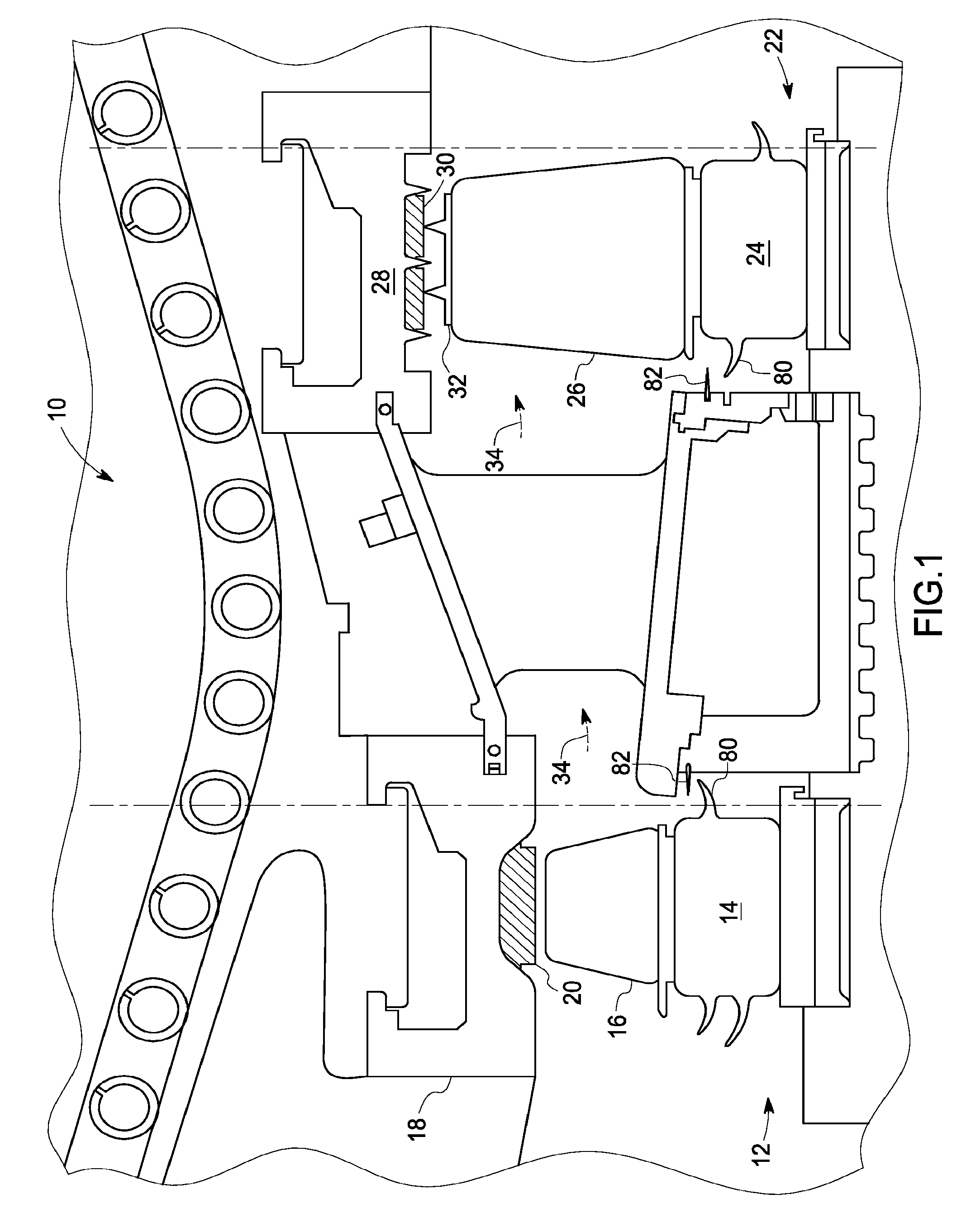Sealing device and method for turbomachinery
a sealing device and turbomachinery technology, applied in the direction of machines/engines, efficient propulsion technologies, liquid fuel engines, etc., can solve the problems of thermal discrepancy between the shroud and the rotor blade, reduce the work efficiency of the turbine stage, and reduce the compression efficiency
- Summary
- Abstract
- Description
- Claims
- Application Information
AI Technical Summary
Benefits of technology
Problems solved by technology
Method used
Image
Examples
Embodiment Construction
[0021]Referring now to FIG. 1, there is illustrated an exemplary portion of a turbine engine, designated generally by the reference numeral 10. Turbine 10 receives a hot gas, generated by an array of combustors (not shown in the figure), which transmit the hot gas along an annular hot gas path 34, as described below. Turbine stages 12, 22 are disposed along the annular hot gas path 34. Each such stage includes a rotor assembly, comprising a plurality of circumferentially spaced rotor blades or buckets, and a stationary shroud assembly. Each stage also includes a seal assembly for sealing a passage of the hot gas between tips of the rotating blades and the stationary shroud. For example, as shown, stage 12 comprises a rotor assembly 14, including a plurality of circumferentially spaced blades 16, a stationary shroud assembly 18, and a seal assembly 20 engaged at an interface of the rotating blades 16 and the stationary shroud 18. Similarly, stage 22 comprises a rotor assembly 24, inc...
PUM
 Login to View More
Login to View More Abstract
Description
Claims
Application Information
 Login to View More
Login to View More - R&D
- Intellectual Property
- Life Sciences
- Materials
- Tech Scout
- Unparalleled Data Quality
- Higher Quality Content
- 60% Fewer Hallucinations
Browse by: Latest US Patents, China's latest patents, Technical Efficacy Thesaurus, Application Domain, Technology Topic, Popular Technical Reports.
© 2025 PatSnap. All rights reserved.Legal|Privacy policy|Modern Slavery Act Transparency Statement|Sitemap|About US| Contact US: help@patsnap.com



